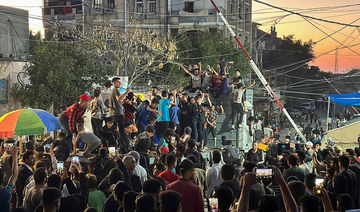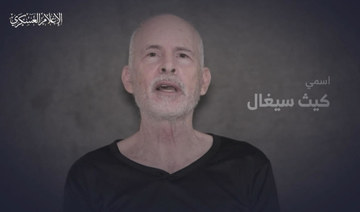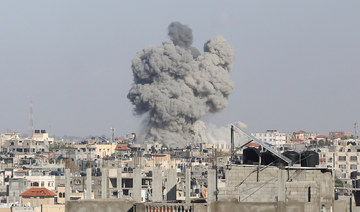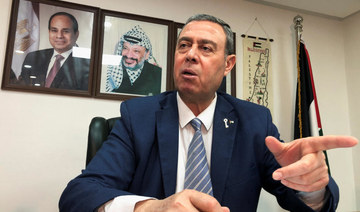LONDON: Authorities in the UAE on Friday announced a further easing of COVID-19 restrictions, as the country continues to move toward the recovery phase of the pandemic. The changes will come into effect on Tuesday, March 1.
The National Emergency Crisis and Disasters Management Authority, also known as NCEMA, said the wearing of masks outdoors will now be optional, although they remain mandatory in public indoor spaces.
Individuals who have been in contact with a person who tested positive for COVID-19 will no longer need to quarantine. The isolation protocols for those who are infected will not change. Each emirate is free to set the length of the quarantine period that is required for those who test positive, and also whether those who have been in contact with an infected person are required to take a PCR test.
The authority also approved a return to the pre-pandemic time intervals between the call to prayer and the iqaamah, and agreed to allow mosques to make available a limited number of copies of the Qur’an, which must be sterilized after each use. The current requirement for worshipers in mosques and other places of worship to remain at least one meter apart will be maintained.
Fully vaccinated travelers need to provide proof of their vaccination status, while those who are not vaccinated must present a negative result of a PCR test taken within 48 hours of departure.
Similarly, NCEMA said anyone wishing to attend local events, exhibitions or other cultural or social activities must show their “green pass” on the Al-Hosn app as proof of vaccination or, failing that, a negative result of a PCR test taken no more than 96 hours before to the event.
In the economic and tourism sectors, social-distancing requirements have been withdrawn and the authority also announced the resumption of all sports activities for all age groups.
NCEMA said the role and responsibilities of the public are just as important as those of the authorities in handling this new phase of the pandemic. The authority added that a full return to normal daily life requires that everyone continues to adhere to the preventive measures that remain in place.
UAE relaxes COVID-19 precautions; masks no longer required outdoors
https://arab.news/2te2n
UAE relaxes COVID-19 precautions; masks no longer required outdoors
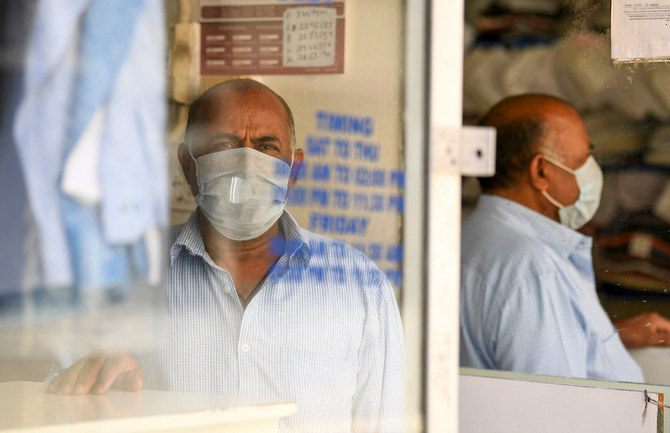
- Individuals who have had contact with a person who subsequently tests positive for the virus will no longer have to quarantine
- The new rules come into effect on Tuesday, March 1
What’s in the three-phase ceasefire deal Hamas backs, but Israel does not?
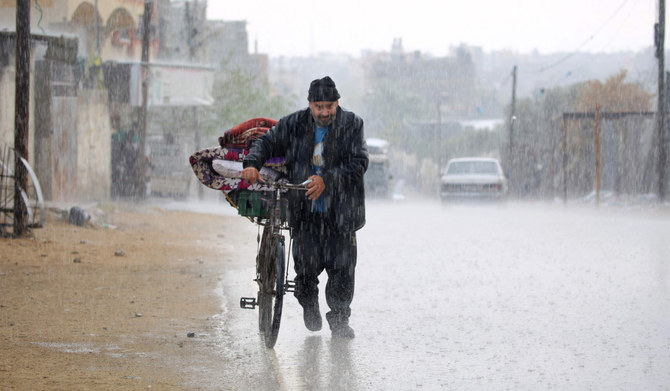
- Israel has killed more than 34,000 Palestinians, according to Gaza’s Health Ministry
CAIRO: Palestinian Islamist group Hamas said on Monday it had agreed to a three-phased deal for a ceasefire and hostages-for-prisoners swap, although an Israeli official said the deal was not acceptable to Israel because terms had been “softened.”
The United States, which alongside Qatar and Egypt has played a mediation role in the talks, said it was studying the Hamas response and would discuss it with Middle East allies.
Based on details announced so far by Hamas officials and an official briefed on the talks, the deal that the Palestinian group said it had agreed to included the following:
PHASE ONE
• 42-day ceasefire period
• Hamas releases 33 Israeli hostages in return for Israel releasing Palestinians from Israeli jails.
• Israel partially withdraws troops from Gaza and allows free movement of Palestinians from south to north Gaza.
PHASE TWO
• Another 42-day period that features an agreement to restore a “sustainable calm” to Gaza, language that an official briefed on the talks said Hamas and Israel had agreed in order to take discussion of a “permanent ceasefire” off the table.
• The complete withdrawal of most Israeli troops from Gaza.
• Hamas releases Israeli reservists and some soldiers in return for Israel releasing Palestinians from jail.
PHASE THREE
• The completion of exchanging bodies and starting the implementation of reconstruction according to the plan overseen by Qatar, Egypt and the United Nations.
• Ending the complete blockade on the Gaza Strip.
Ex-Gaza hostages in Auschwitz for March of the Living
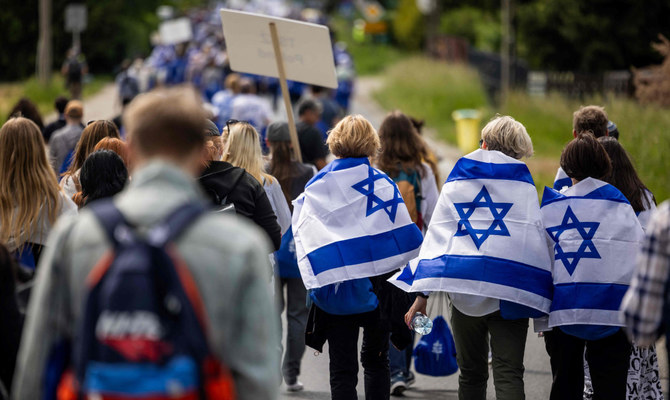
- One million European Jews died at the camp between 1940 and 1945 along with around 80,000 non-Jewish Poles, 25,000 Roma and 20,000 Soviet soldiers
OSWIECIM, Poland: Released Gaza hostages joined Holocaust survivors on Monday for an annual march in southern Poland to commemorate victims of the Auschwitz-Birkenau death camp.
Survivors of the October 7 attack on Israel by Hamas also joined the “March of the Living” at the site, which has become a symbol of Nazi Germany’s genocide of European Jews.
“I came to show that we’re alive and that we’ve built a country,” Bella Haim, 86, told AFP.
Her grandson Yotam Haim was captured by Hamas militants on October 7 and later gunned down in Gaza by Israeli soldiers who failed to realize he had escaped from his captors.
“I told myself that I couldn’t remain silent and I’m marching here in the name of my grandson Yotam and the victims” of the attack, Bella said.
She was part of an Israeli delegation that flew to Poland for the march in the southern city of Oswiecim, which numbered around 8,000 people this year.
Every year, Jews and non-Jews from around the world take part in the event at the site of the former death camp, which was built by Nazi Germany after it invaded Poland.
One million European Jews died at the camp between 1940 and 1945 along with around 80,000 non-Jewish Poles, 25,000 Roma and 20,000 Soviet soldiers.
The camp was liberated by the Red Army in January 1945.
This year’s March of the Living was briefly disrupted by pro-Palestinian protesters who spoke out against what they called Israel’s “genocide” in Gaza.
The war in Gaza broke out after Hamas’s unprecedented October 7 attack on Israel, which resulted in the deaths of more than 1,170 people, mostly civilians, according to an AFP tally of Israeli figures.
The militants also took some 250 hostages, of whom Israel estimates 128 remain in Gaza. The army says 35 of them are dead.
Vowing to destroy Hamas, Israel’s retaliatory offensive has killed at least 34,735 people in Gaza, mostly women and children, according to the Hamas-run territory’s health ministry.
Houthis ‘dismantle spy network aiding Israel, US’
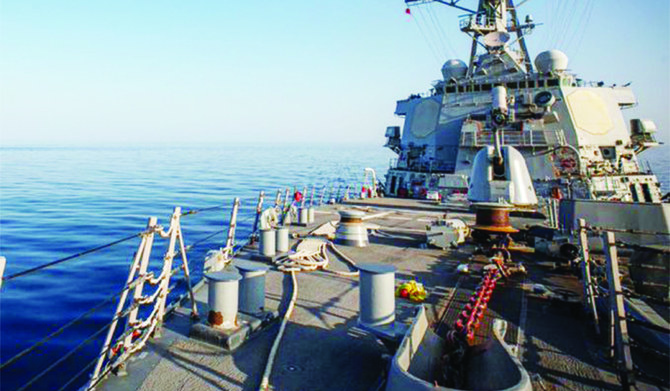
- Red Sea and the Gulf of Aden, disrupting global trade in a campaign they say is in solidarity with Palestinians amid the Israel-Hamas war
- Israel has killed more than 34,000 Palestinians in Gaza, mostly women and children, according to the health ministry in the Hamas-run territory
DUBAI: The Houthis on Monday said they had exposed a “spy” network aiding the US and Israel and arrested suspected members of it.
The Houthi-run Saba news agency published footage of the detained men, describing them as “spies recruited to collect information and monitor sites operated by the Houthi armed forces on Yemen’s western coast for the benefit of the American and Israeli enemy.”
According to Saba, the group had been recruited after the Houthis in November began targeting vessels in the Red Sea and the Gulf of Aden, disrupting global trade in a campaign they say is in solidarity with Palestinians amid the Israel-Hamas war.
The report did not specify the number of suspects arrested, but unverified images Saba shared on social media showed at least 18 people.
No evidence was provided to substantiate the charges, which Saba said the suspects had confessed to.
The Houthis, who control parts of war-torn Yemen, “will spare no effort in carrying out their responsibility to secure the home front and protect it from infiltration attempts by the American and Israeli enemy,” Saba said.
In December, the US announced a maritime security initiative to protect Red Sea shipping from Houthi attacks.
These attacks have forced commercial vessels to divert from the busy shipping lane, which normally carries 12 percent of global trade.
Since January, the US and Britain have launched repeated strikes on Houthi targets in Yemen in response to their attacks on shipping.
The Houthi-run news agency said the suspects were tasked with monitoring anti-ship missile and drone launch sites and the locations of Houthi vessels and submitting coordinates to facilitate strikes by the US as well as British forces.
The strikes have done little to deter the Houthis, who have vowed to target Israeli, American, and British vessels as well as all ships heading to Israeli ports.
On Friday, the Houthis threatened to extend their attacks into the Mediterranean Sea.
Concerns grow as Khamsin winds bring desert fly invasion to Egypt
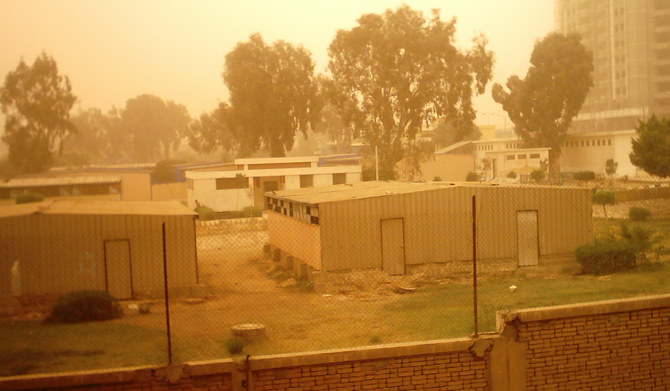
- Ali Younis, a professor of entomology at Cairo University, said the desert fly was similar to a common housefly, some 3.5mm-6.5mm in length and varying in color from black and brown to blue
CAIRO: An invasion of desert flies in Egypt has sparked debate about how to handle the insects and the health hazards they can pose.
The flies have been carried by the Khamsin winds — dry, sand-filled winds from the southern Sudanese deserts — and have been spotted in Marsa Matrouh. Meteorologists have warned the public to keep their windows closed.
Ali Qutb, a climate professor at Zagazig University and former vice president of the Egyptian Meteorological Authority, told Arab News: “Egypt’s geographical location and climate make it particularly susceptible to these flies. The desert fly problem peaks during the summer and is exacerbated by the Khamsin winds of spring, which carry sand from the desert, aiding the spread of these flies from their natural desert habitats to populated areas.”
He added: “These flies thrive in tropical and subtropical regions and have been documented throughout Saudi Arabia. They prefer desert and rural environments, often attacking nomadic communities, (and) especially children, in large numbers.
“The primary reasons for their spread include high temperatures, which facilitate their rapid breeding, alongside inadequate health surveillance and ineffective pest control programs. Controlling desert flies involves removing breeding sites such as trash and organic debris, employing fly traps, and applying insecticides in affected areas.”
Ali Younis, a professor of entomology at Cairo University, said the desert fly was similar to a common housefly, some 3.5mm-6.5mm in length and varying in color from black and brown to blue.
He said: “These flies rarely enter buildings; they prefer light areas over dark and can tolerate high temperatures. They typically congregate around eyes and wounds, where they can cause intense irritation.”
Highlighting the potential dangers, Younis added: “Desert flies can transmit a multitude of diseases to humans, including viral diseases like spinal meningitis, bacterial infections such as anthrax, cholera, and typhoid, and protozoal diseases like amoebiasis and tapeworms. Their bites are not only painful but can also cause severe itching.”
He said there were several effective deterrents: “Using incense is a popular method to repel desert flies, as is a mixture of vinegar and soap. Placing a quarter cup of vinegar mixed with a quarter cup of liquid soap in a deep bowl in the area to be cleaned and leaving it for a prolonged period can help.
“Additionally, herbs like basil and wild mint are effective in repelling these flies from homes, and a mixture of hot pepper and water sprayed around outdoor areas can also be beneficial.”
The Meteorological Authority has issued warnings about the desert fly invasion, advising citizens to keep doors and windows securely closed and use mosquito nets while sleeping. Other precautions include maintaining personal hygiene and keeping homes clean, removing sources of stagnant water, and using insect repellent when outdoors.
Orders to evacuate Rafah ‘inhumane,’ may amount to war crimes: UN human rights chief
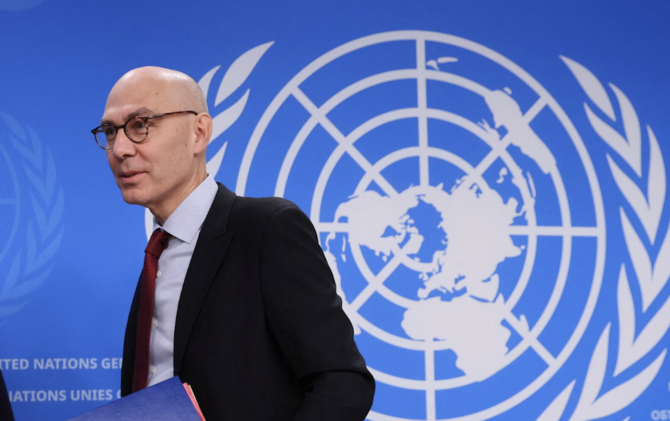
- Volker Turk: New offensive would exacerbate civilian deaths, suffering beyond ‘already unbearable levels’ — According to UNICEF, children account for half of the more than 1.2m people sheltering in Rafah
NEW YORK: UN human rights chief Volker Turk on Monday warned that Israel’s orders for Palestinians to vacate parts of Rafah ahead of a new offensive there would only exacerbate civilian deaths and suffering beyond “already unbearable levels.”
He added that such actions could constitute war crimes, and lamented that months of “relentless strikes” by Israel across the enclave have left no other location except Rafah with the infrastructure and resources to host the mass displacement of more than 1.2 million Palestinians.
Sheltering in tents and overcrowded schools in Rafah, they are now being instructed to move to Al-Mawasi, an area that is already overcrowded and lacking essential services.
Turk said the Israeli orders to relocate Palestinians are “inhumane” and risk exposing them to further danger and misery. Such actions “can sometimes amount to a war crime,” he added.
“Gazans continue to be hit with bombs, disease, and even famine. And today, they have been told that they must relocate yet again as Israeli military operations into Rafah scale up,” Turk said. “This is inhumane.”
The UN Office for the Coordination of Humanitarian Affairs on Monday said a mass evacuation on this scale “is impossible to carry out safely.”
OCHA added that the area of Rafah under evacuation orders covers more than 30 sq. km. There are nine sites sheltering displaced people in the area. It is also home to three clinics and six warehouses.
As of today, more than three-quarters of the Gaza Strip are under evacuation orders.
OCHA said any full-scale incursion into Rafah would push displaced Palestinians “past their breaking point,” and would cripple the already very fragile humanitarian operation there.
It added: “The UN is not taking part in involuntary evacuations or in the setting up of any displacement zones in southern Gaza.”
According to UNICEF, children account for half of the more than 1.2 million people sheltering in Rafah.
In a statement on Monday, the agency called for children not to be forcibly relocated, saying there is nowhere safe for them to go.
UNICEF said potential evacuation corridors are likely mined or littered with unexploded ordnance, and shelter and services in areas for relocation are likely to be limited.
Turk stressed that international humanitarian law prohibits ordering the displacement of civilians for reasons related to the conflict unless the security of civilians involved or “imperative military reasons so demand,” and even then subject to strict legal requirements.
“Failure to meet these obligations may amount to forced displacement, which is a war crime,” the office of the UN High Commissioner for Human Rights said in a statement.
“Forcibly relocating hundreds of thousands from Rafah to areas which have already been flattened and where there is little shelter and virtually no access to humanitarian assistance necessary for their survival is inconceivable. It will only expose them to more danger and misery.”
On Monday, Israel carried out airstrikes on Rafah, killing at least 26 Palestinians, most of them women and children.
Also on Monday, two crossings into Rafah were closed, completely disrupting the already meager flow of humanitarian assistance.
“More attacks on what is now the primary humanitarian hub in the Gaza Strip are not the answer,” said Turk.
“The lessons of the past seven months of conflict in Gaza are clear — with women and children making up over 70 percent of the more than 120,000 killed, wounded and missing. Enough of the killing.”
Turk reiterated the urgent need for a ceasefire and unhindered, at-scale flow of humanitarian aid into Gaza.
He also called for the immediate release of hostages held by Hamas, and of Palestinians arbitrarily detained by Israel.






